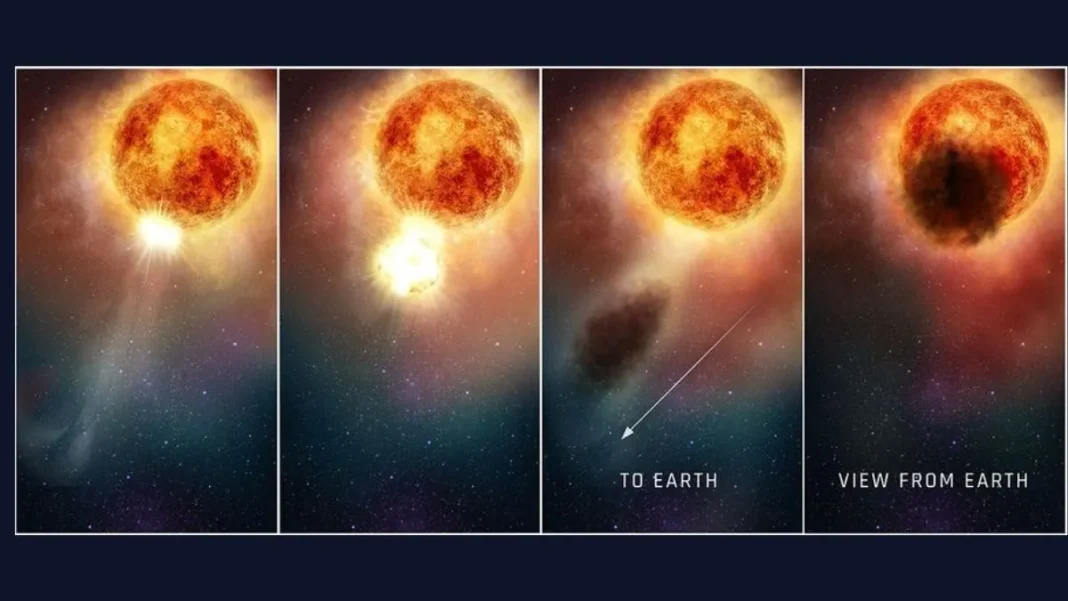Key Takeaways
- Astronomers confirm first companion star orbiting Betelgeuse
- Discovery made using NASA’s Chandra and Hubble telescopes
- Companion star ‘Betelbuddy’ is Sun-like, not a white dwarf
- Finding challenges existing theories of binary star formation
Astronomers have made a historic breakthrough by confirming the existence of a companion star orbiting the red supergiant Betelgeuse. Using NASA’s Chandra X-ray Observatory and Hubble Space Telescope, researchers directly imaged the faint stellar partner for the first time.
Discovery Confirms Long-Standing Theories
The discovery, published in The Astrophysical Journal on October 10, 2025, validates years of speculation about Betelgeuse being a binary system. Previous observations from the Gemini North Telescope in Hawaii had detected a faint glimmer near the supergiant, while periodic dimming in Betelgeuse’s brightness had hinted at a hidden partner.
Meet ‘Betelbuddy’: Betelgeuse’s Sun-Like Companion
Lead author Anna O’Grady, a postdoctoral fellow at Carnegie Mellon University, revealed this represents the deepest X-ray observation of Betelgeuse ever conducted. The companion star, nicknamed ‘Betelbuddy,’ appears to be an immature, Sun-like star rather than a white dwarf or neutron star as previously theorized.
“This is an extreme mass ratio binary system,” O’Grady stated, noting that Betelgeuse itself is 16 to 17 times larger than our Sun, making this pairing a very unusual phenomenon in the universe.
Implications for Stellar Evolution
This finding challenges current theories of binary star formation, which typically involve stars of similar mass. Betelgeuse’s relative proximity to Earth enabled this rare observation despite the supergiant’s overwhelming brightness.
Researchers believe future-generation telescopes will reveal how Betelbuddy influences Betelgeuse’s life cycle and eventual supernova explosion, providing crucial insights into the development of massive stars throughout the universe.




